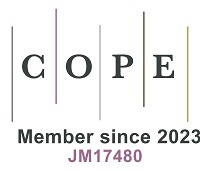REFERENCES
1. Ministry of Ecology and Environment of China. State of the ecological environment bulletin. 2020. Available from: https://www.mee.gov.cn/hjzl/sthjzk/zghjzkgb/ [Last accessed on 19 May 2025].
2. Anenberg, S. C.; Mohegh, A.; Goldberg, D. L.; et al. Long-term trends in urban NO2 concentrations and associated paediatric asthma incidence: estimates from global datasets. Lancet. Planet. Health. 2022, 6, e49-58.
4. Smith, K. R. Air pollution assessing total exposure in the United States. Environ. Sci. Policy. Sustain. Dev. 1988, 30, 10-38.
5. Afzali, A.; Rashid, M.; Afzali, M.; Younesi, V. Prediction of air pollutants concentrations from multiple sources using AERMOD coupled with WRF prognostic model. J. Clean. Prod. 2017, 166, 1216-25.
6. Claggett, M. Comparing predictions from the CAL3QHCR and AERMOD models for highway applications. Transport. Res. Rec. 2014, 2428, 18-26.
7. Carruthers, D.; Holroyd, R.; Hunt, J.; et al. UK-ADMS: a new approach to modelling dispersion in the earth's atmospheric boundary layer. J. Wind. Eng. Ind. Aerod. 1994, 52, 139-53.
8. Scire, J. S.; Strimaitis, D. G.; Yamartino, R. J. A user’s guide for the CALPUFF dispersion model. Concord, MA: Earth Tech Inc., 2000. Available from: https://www.eoas.ubc.ca/courses/atsc507/ADM/calpuff/documentation/CAL-v5/CALPUFF_UsersGuide.pdf [Last accessed on 19 May 2025].
9. Ghannam, K.; El-Fadel, M. Emissions characterization and regulatory compliance at an industrial complex: an integrated MM5/CALPUFF approach. Atmos. Environ. 2013, 69, 156-69.
10. Ergun, P.; Kara, M.; Bayram, A.; Dumanoglu, Y.; Altiok, H.; Elbir, T. Application of an activity based approach to assess air quality from mobile sources in an urban center. Curr. Environ. Eng. 2014, 1, 64-72.
11. Joo, S.; Oh, C.; Lee, S.; Lee, G. Assessing the impact of traffic crashes on near freeway air quality. Transp. Res. Part. D. 2017, 57, 64-73.
12. Charabi, Y.; Abdul-Wahab, S.; Al-Rawas, G.; Al-Wardy, M.; Fadlallah, S. Investigating the impact of monsoon season on the dispersion of pollutants emitted from vehicles: a case study of Salalah city, sultanate of Oman. Transp. Res. Part. D. 2018, 59, 108-20.
13. Abdul-Wahab, S. A.; Fadlallah, S. O. A study of the effects of vehicle emissions on the atmosphere of Sultan Qaboos University in Oman. Atmos. Environ. 2014, 98, 158-67.
14. Broomandi, P. Modeling of air pollutants' dispersion by means of CALMET/CALPUFF (case study: district 7 in Tehran city). 2018.
15. Farrell, W.; Weichenthal, S.; Goldberg, M.; Valois, M. F.; Shekarrizfard, M.; Hatzopoulou, M. Near roadway air pollution across a spatially extensive road and cycling network. Environ. Pollut. 2016, 212, 498-507.
16. Zhang, Y.; Cai, M.; Wang, Z. Study on the distribution characteristics of PM2.5 on both sides of the elevated road in Guangzhou. Transp. Energy. Conserv. Environ. Prot. 2019, 15, 76-81.
17. Shekarrizfard, M.; Faghih-Imani, A.; Hatzopoulou, M. An examination of population exposure to traffic related air pollution: comparing spatially and temporally resolved estimates against long-term average exposures at the home location. Environ. Res. 2016, 147, 435-44.
18. Chen, Y.; Ebenstein, A.; Greenstone, M.; Li, H. Evidence on the impact of sustained exposure to air pollution on life expectancy from China's Huai River policy. Proc. Natl. Acad. Sci. USA. 2013, 110, 12936-41.
19. Fabisiak, J. P.; Jackson, E. M.; Brink, L. L.; Presto, A. A. A risk-based model to assess environmental justice and coronary heart disease burden from traffic-related air pollutants. Environ. Health. 2020, 19, 34.
20. Levy, I.; Karakis, I.; Berman, T.; Amitay, M.; Barnett-Itzhaki, Z. A hybrid model for evaluating exposure of the general population in Israel to air pollutants. Environ. Monit. Assess. 2019, 192, 4.
21. Guo, H.; Yang, S.; He, X.; Qiao, B.; Li, M. Study on the exposure intensity of air pollution in Zhengzhou city based on nighttime lighting. J. Henan. Polytech. Univ. 2019, 38, 81-8.
22. Zhang, X.; Hu, H. Risk assessment of exposure to PM2.5 in Beijing using multi-source data. J. Peking. Univ. 2018, 54, 1103-13.
23. Lim, S.; Kim, J.; Kim, T.; et al. Personal exposures to PM2.5 and their relationships with microenvironmental concentrations. Atmos. Environ. 2012, 47, 407-12.
24. Kousa, A.; Oglesby, L.; Koistinen, K.; Künzli, N.; Jantunen, M. Exposure chain of urban air PM2.5 - associations between ambient fixed site, residential outdoor, indoor, workplace and personal exposures in four European cities in the EXPOLIS-study. Atmos. Environ. 2002, 36, 3031-9.
25. Fu, Q.; Kan, H. Air pollution dispersion model and assessment of population weighted exposure. J. Environ. Health. 2004, 414-6.
26. Hoek, G.; Brunekreef, B.; Goldbohm, S.; Fischer, P.; van, B. P. A. Association between mortality and indicators of traffic-related air pollution in the Netherlands: a cohort study. Lancet 2002, 360, 1203-9.
27. Zou, B.; Pu, Q.; Luo, Y.; Tian, Y.; Zhang, W. Research on multi-indicator spatial zoning for urban PM2.5 pollution prevention and control. J. Saf. Environ. 2016, 16, 337-42.
28. Saraswat, A.; Kandlikar, M.; Brauer, M.; Srivastava, A. PM2.5 population exposure in New Delhi using a probabilistic simulation framework. Environ. Sci. Technol. 2016, 50, 3174-83.
29. Tang, R.; Tian, L.; Thach, T. Q.; et al. Integrating travel behavior with land use regression to estimate dynamic air pollution exposure in Hong Kong. Environ. Int. 2018, 113, 100-8.
30. Brusselaers, N.; Macharis, C.; Mommens, K. The health impact of freight transport-related air pollution on vulnerable population groups. Environ. Pollut. 2023, 329, 121555.
31. Xu, Y.; Yi, L.; Cabison, J.; et al. The impact of GPS-derived activity spaces on personal PM2.5 exposures in the MADRES cohort. Environ. Res. 2022, 214, 114029.
32. Guo, H.; Li, W.; Yao, F.; et al. Who are more exposed to PM2.5 pollution: a mobile phone data approach. Environ. Int. 2020, 143, 105821.
33. Lu, Y.; Habre, R. Impacts of distinct travel behaviors on potential air pollution exposure measurement error. Atmos. Environ. 2023, 306, 119820.
35. Martuzzi, M.; Mitis, F.; Forastiere, F. Inequalities, inequities, environmental justice in waste management and health. Eur. J. Public. Health. 2010, 20, 21-6.
36. Mitchell, G.; Norman, P.; Mullin, K. Who benefits from environmental policy? An environmental justice analysis of air quality change in Britain, 2001-2011. Environ. Res. Lett. 2015, 10, 105009.
37. Ministry of Ecology and Environment of China. Technical guidelines for environmental impact assessment - atmospheric environment. 2018. Available from: https://www.mee.gov.cn/ywgz/fgbz/bz/bzwb/other/pjjsdz/201808/t20180814_451386.shtml [Last accessed on 19 May 2025].
38. Luo, M.; Ding, T.; Chen, Q. Characteristics and simulation methods for photochemical transformation of nitrogen oxides. Environ. Eng. 2017, 35, 106-12.
39. Wang, H.; Luo, X.; Liu, C.; Fu, Q.; Yi, M. Spatio-temporal variation-induced group disparity of intra-urban NO2 exposure. Int. J. Environ. Res. Public. Health. 2022, 19, 5872.
40. Ta, N.; Wang, X.; Hu, L.; Liu, Z. Gender difference in commuting travel: a comparative study of suburban residents in Beijing and Shanghai. Transp. Policy. 2022, 28, 196-203.
41. Ministry of Ecology and Environment of China. Shanghai’s air pollution control efforts found lacking. Available from: https://www.mee.gov.cn/ywgz/zysthjbhdc/dcjl/202406/t20240613_1075708.shtml [Last accessed on 19 May 2025].
42. Feng, J.; Yang, Z. Factors influencing travel behavior of urban elderly people in Nanjing. J. Transp. Geogr. 2015, 34, 1598-608.
43. Pommier, M. Estimations of NOx emissions, NO2 lifetime and their temporal variation over three British urbanised regions in 2019 using TROPOMI NO2 observations. Environ. Sci. Atmos. 2023, 3, 408-21.
44. Demetillo, M. A. G.; Harkins, C.; Mcdonald, B. C.; Chodrow, P. S.; Sun, K.; Pusede, S. E. Space-based observational constraints on NO2 air pollution inequality from diesel traffic in major US cities. Geophys. Res. Lett. 2021, 48, e2021GL094333.
45. Mo, S.; Wang, Y.; Peng, M.; et al. Sex disparity in cognitive aging related to later-life exposure to ambient air pollution. Sci. Total. Environ. 2023, 886, 163980.
46. Hu, Y.; Yao, M.; Liu, Y.; Zhao, B. Personal exposure to ambient PM2.5, PM10, O), NO2, and SO2 for different populations in 31 Chinese provinces. Environ. Int. 2020, 144, 106018.
47. Kim, H.; Noh, J.; Noh, Y.; Oh, S. S.; Koh, S. B.; Kim, C. Gender difference in the effects of outdoor air pollution on cognitive function among elderly in Korea. Front. Public. Health. 2019, 7, 375.
48. Chau, C. K.; Tu, E. Y.; Chan, D. W. T.; Burnett, J. Estimating the total exposure to air pollutants for different population age groups in Hong Kong. Environ. Int. 2002, 27, 617-30.
49. Setton, E.; Keller, C. P.; Cloutier-Fisher, D.; et al. Gender differences in chronic exposure to traffic-related air pollution - A simulation study of working females and males. Prof. Geogr. 2010, 62, 66-83.
50. Sillman, S. The relation between ozone, NOx and hydrocarbons in urban and polluted rural environments. Atmos. Environ. 1999, 33, 1821-45.
52. Beidi, D. Temporal-spatial distribution characteristics of provincial industrial NOx emissions and driving factors in China from 2006 to 2013. Resour. Sci. 2016, 38, 93-8.
53. Chen, X. P.; Zhou, S. H.; Li, Q. P.; Zhan, W. Research on social differentiation of urban road network in Guangzhou: Gender differences of travel distribution based on trajectory data. Geogr. Res. 2021, 40, 1652-66.
54. Shen, Y. Segregation through space: a scope of the flow-based spatial interaction model. J. Transp. Geogr. 2019, 76, 10-23.
56. Tong, X.; Wang, Y. A gender comparative study of travel modes of urban residents. J. Shanxi. Univ. 2018, 45, 64-69.
57. Shanghai Statistics Bureau. Analysis on the development status and characteristics of female population in Shanghai. 2011. Available from: https://tjj.sh.gov.cn/tjfx/20111123/0014-236073.html [Last accessed on 19 May 2025].
58. Institute of Urban and Rural Construction and Transportation Development. Main results of the fifth comprehensive traffic survey in Shanghai. Traffic. Transp. 2015, 31, 15-18.
59. Huang, J.; Zhang, R.; Hu, G. Exploring the daily life circle of the elderly based on spatio-temporal behavior - Spatial recognition and feature analysis. Urban. Plan. Forum. 2019, 87-95.








